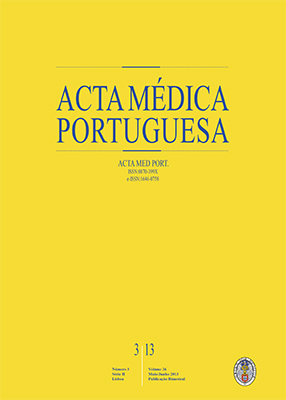Improvement of the Embalming Perfusion Method: The Innovation and the Results by Light and Scanning Electron Microscopy
DOI:
https://doi.org/10.20344/amp.4236Abstract
Embalming is a chemical process that aims the preservation and sanitization of the human body indefinitely. The technique of embalming is an important tool in teaching and research in anatomy enabling the preservation of cadaveric material in good conditions (lessening any significant structural changes and maintaining the natural appearance). This article presents the results of embalmed cadavers in the course of arterial perfusion, through the use of a perfusion machine, particularly designed to this objective, and which allows the control of the embalming fluid injection process. The influence of this technique and the optimization of its parameters on the final quality of embalming were evaluated by sequential histological analysis of the cadaveric tissues using an original method of classification of samples collected from 17 deceased corpses of the Corpses Donation Office of the Department of Anatomy of Faculdade de Ciências Médicas from Universidade Nova de Lisboa, subject to the embalming technique developed in the Department. We concluded that, with this method, there is a decrease of the decomposition process at the time of embalming, which is effective at long term (over a year), requiring merely the maintenance of the body at low temperatures (4° C) and it is possible to observe that the tissue best preserved over time is muscle, showing a conservation considered optimal.Downloads
Downloads
Published
How to Cite
Issue
Section
License
All the articles published in the AMP are open access and comply with the requirements of funding agencies or academic institutions. The AMP is governed by the terms of the Creative Commons ‘Attribution – Non-Commercial Use - (CC-BY-NC)’ license, regarding the use by third parties.
It is the author’s responsibility to obtain approval for the reproduction of figures, tables, etc. from other publications.
Upon acceptance of an article for publication, the authors will be asked to complete the ICMJE “Copyright Liability and Copyright Sharing Statement “(http://www.actamedicaportuguesa.com/info/AMP-NormasPublicacao.pdf) and the “Declaration of Potential Conflicts of Interest” (http:// www.icmje.org/conflicts-of-interest). An e-mail will be sent to the corresponding author to acknowledge receipt of the manuscript.
After publication, the authors are authorised to make their articles available in repositories of their institutions of origin, as long as they always mention where they were published and according to the Creative Commons license.









